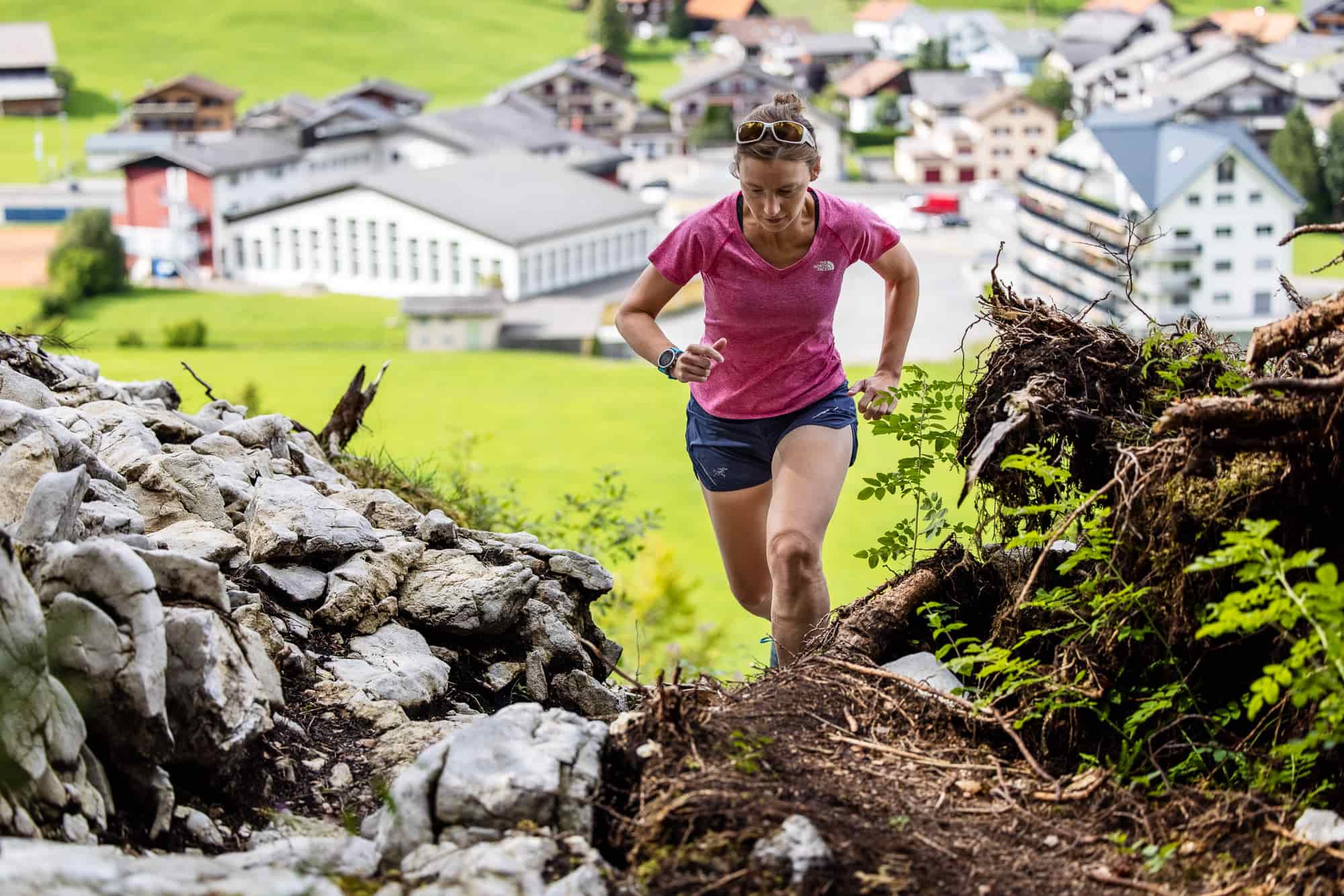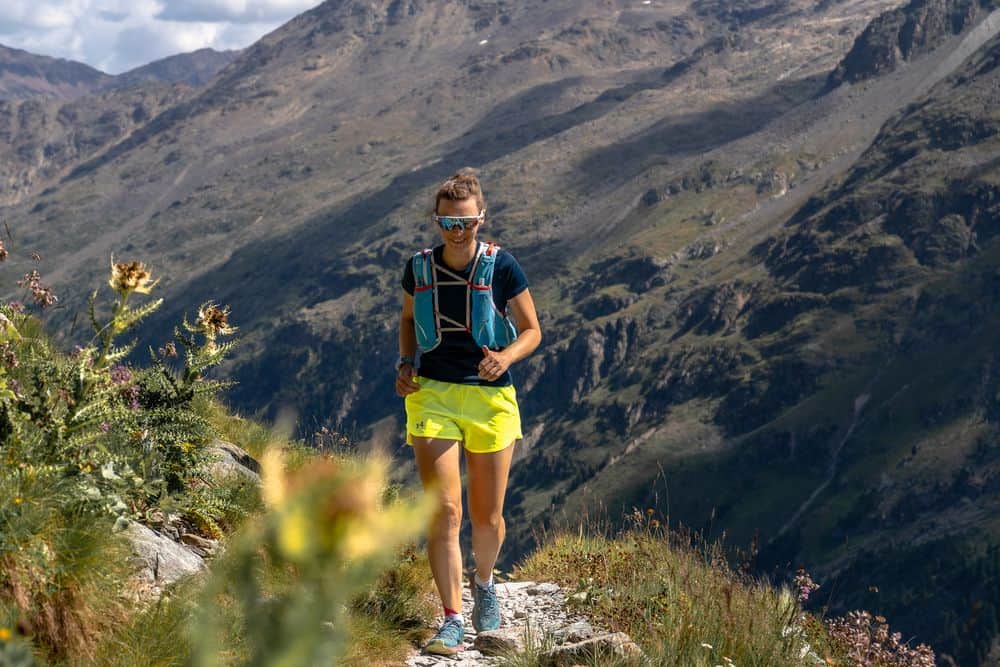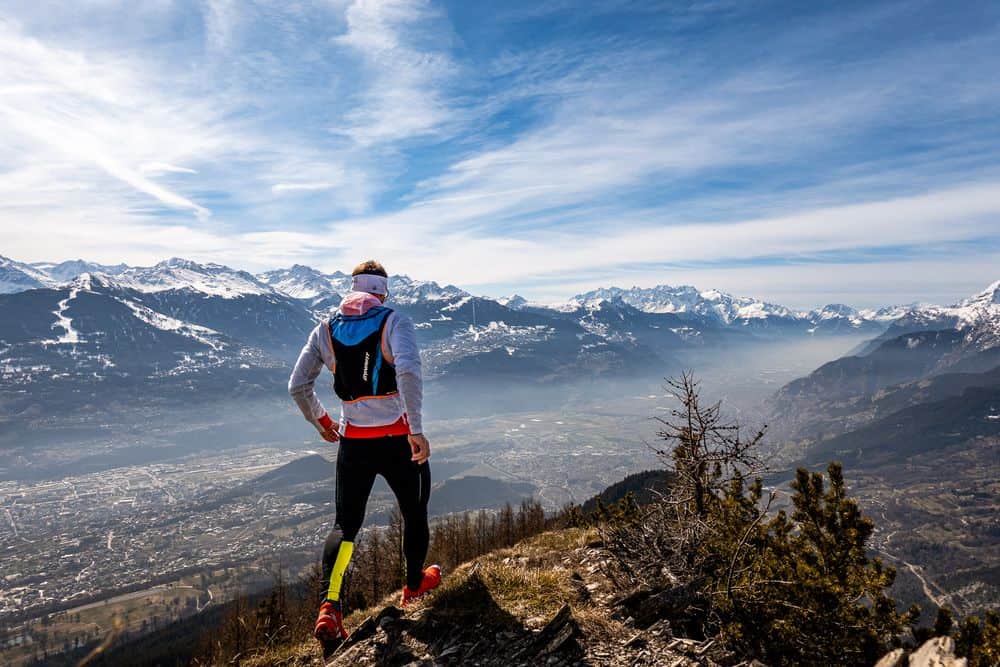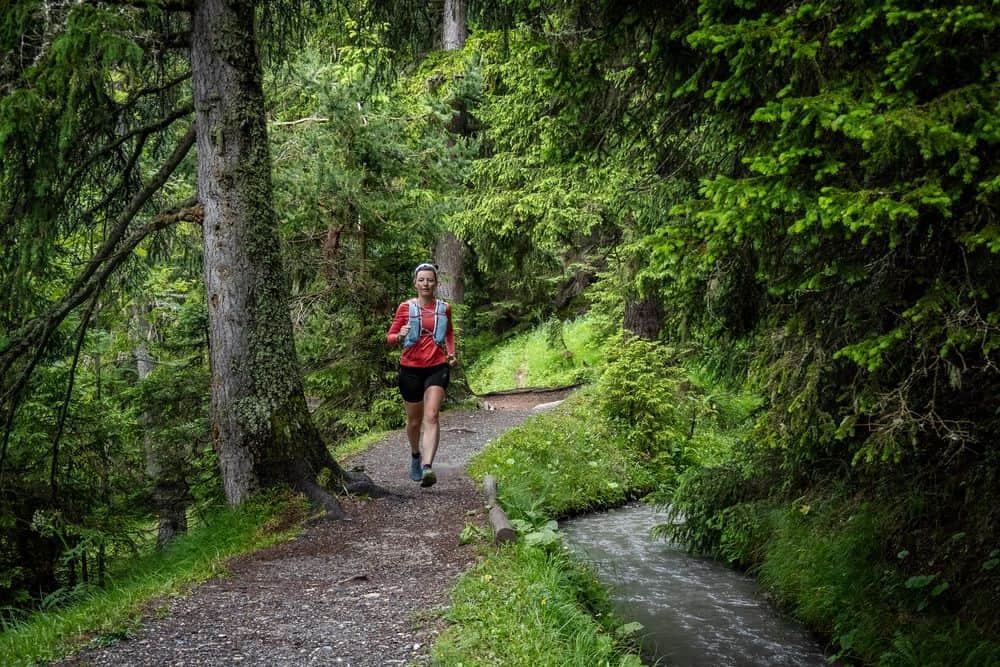Some days I feel incredibly strong when I'm out on the trails and I feel like nothing could stop me. And then there are those other days. Days when the same trail, the same elevation gain or the same exposed passage seem almost impossible.
As a passionate [trail runner](/trail running), I now know that my performance and well-being as a woman are often closely linked to the different phases of my cycle. In this article, I would like to show you how your natural rhythm affects your trail running experience and which hormonal changes are responsible for this. You will also gain insights into how you can listen to your body's signals and plan outdoor activities with each phase of your cycle in mind.
Basics about the female cycle
The female cycle begins on the first day of menstruation and ends on the last day before the next period. On average, this is 28 days, although fluctuations of 21 to 35 days are quite normal. The cycle is controlled by the body's own hormones, primarily oestrogen and progesterone.
The hormonal changes during your cycle can affect not only your well-being, but also your physical and mental performance. The better you understand what happens in your body during the individual phases, the more you can adapt your training or tours to your needs.
The first half of the cycle is called the follicular phase. It begins on the first day of menstruation and lasts around 12 days, although fluctuations are also quite normal here. During this time, oestrogen production increases. An egg matures in the ovary and when the oestrogen level is at its highest, during the ovulation phase, ovulation takes place. The egg then passes through the fallopian tube into the uterus and can now be fertilized. Now the second half of the cycle begins, the so-called luteal phase. This is almost identical for all women and usually lasts no more than 16 days. If the egg has not been fertilized, the two hormones progesterone and oestrogen fall during this phase and the uterine lining is shed at the end. Menstruation then begins and the cycle starts again.
The effects of the menstrual cycle on performance
The menstrual cycle begins with menstruation and these days are characterized by discomfort or pain for many women. You should postpone strenuous training sessions for a few days and take things slowly. Light exercise, walks or relaxed running training as well as yoga, stretching and relaxation exercises can help you feel better.
This is followed by the best training days as a reward and your body is ready for strenuous trails. While oestrogen levels rise and progesterone remains at a low level, your body is ready to perform. A study has shown that muscle building and performance-oriented training are now the order of the day. Interval training and longer runs should now be on your training plan, as women often feel more motivated during this time and, according to a study, the body can even regenerate better during this phase. As ovulation approaches, i.e. the ovulation phase, the body really revs up again. Oestrogen levels reach their maximum, basal body temperature rises and performance is at its peak. This is the best time for strength training or a competition.
But then things go downhill, at least with the hormones. Oestrogen and progesterone drop sharply in the luteal phase, and with them performance and motivation. The same training suddenly feels much more strenuous and less demanding training sessions are definitely more suitable. And then there is the rebound in progesterone. The hormone has a reducing rather than building effect on your muscles and makes for softer tissue, which can increase the risk of injury. Strength training is therefore much less effective in this phase and very technical runs further increase the risk of injury. The increased basal body temperature during this phase can also have a negative impact on your heat tolerance during runs in the summer months.
The best thing to do during this phase is to build up your basic endurance, for example with long, less intensive runs on relaxed trails or by taking a leisurely spin on your road bike or gravel bike for a change.
Sport during menstruation
For many women - and I am no exception - the days during menstruation are painful and unpleasant. Cramps in the lower abdomen, back pain, heavy legs, headaches: the symptoms are varied and their severity differs from woman to woman. For some, they only last a few hours, while others suffer for days on end. However, this doesn't necessarily mean you have to give up sport and trail running.
In principle, there is nothing wrong with training sessions during menstruation. I've found that relaxed runs without a lot of elevation gain and in the summer, not especially in the midday heat, help me to cope better with the cramps. The movement helps my body to relax and I usually feel better after a short running session than before. But if your body is telling you that running is not an option, then you should listen to it. Sometimes just a short walk or a round of yoga can help you feel better. And if the day ends on the couch with a hot water bottle to relax because that's exactly what you need, that's okay too. The important thing is that you feel comfortable.
There are also big differences from woman to woman when it comes to the intensity of bleeding. If you have heavy periods, you may feel less like doing sports for longer than if you barely notice your bleeding. Some feel most comfortable with pads or period underwear, others prefer to use tampons. I switched to a menstrual cup a few years ago and I find it particularly beneficial when doing sport, as I don't notice the cup and after an initial test phase I can be sure that nothing “goes wrong”. The decision to use a hygiene product is a very personal one and just as individual as everything else about your cycle.
Simple cycle monitoring thanks to the app
Do you know where you stand in your cycle today? If not, an app could help you keep track. In addition to the date of the first day of your period, many apps offer other functions and, thanks to various methods, can display the fertile days and the time of the next menstruation, for example. These findings are usually derived from information such as the consistency of cervical mucus or basal body temperature. The only negative point about many of these apps is the data protection regulations. As this involves very personal data, I use the app from myNFP, which sets extremely high standards in terms of data protection.
Conclusion
Getting trail running in tune with your cycle requires some knowledge and documentation, but can be incredibly informative for your own performance curve and training planning. In the follicular and ovulatory phase, oestrogen levels rise, which increases your performance and motivation, ideal for intensive training. In the luteal phase and during menstruation, hormones drop, resulting in less energy and a higher risk of injury; light and regenerative activities are more suitable here. Your period doesn't have to be a training killer and with adapted sessions you can still be out on the trails during it. Apps can help you keep track of your cycle and make the right decisions.
Note: All statements refer to a natural cycle without hormone-controlled contraceptives such as the pill. This article does not constitute medical advice and does not replace a consultation with a doctor.



